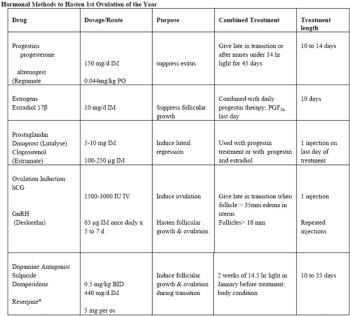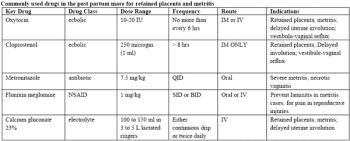Michelle M. LeBlanc, DVM, DACT
Articles by Michelle M. LeBlanc, DVM, DACT

Correcting the defects in uterine defense, neutralizing virulent bacteria, and controlling post-breeding inflammation are the goals of successful therapy. This is accomplished by surgically correcting anatomical defects, improving physical drainage after insemination, reducing the length or modulating the inflammatory response to insemination and inhibiting bacterial growth.

By definition, the complete reproductive cycle includes a period of estrus, concluding with ovulation and a period of diestrus when progesterone levels are elevated. Observing periodic estrous behavior does not prove cyclicity. Evidence that ovulation is occurring can be from sequential data from ovarian palpation, presence of a corpus luteum as shown by ultrasonography or elevation of serum progesterone levels.

Advanced reproductive technologies such as cooled semen, frozen semen, embryo transfer and gamete inter fallopian tube transfer (GIFT) have given horse owners choices and freedom. Mares can be bred at home with semen collected from stallions that live anywhere in North America, Europe or Australasia. Stallions can compete during the breeding season while mares are bred with their previously frozen semen.

A basic reproductive examination includes obtaining a history, conducting a physical examination, evaluating the perineal conformation, and performing a rectal/ultrasonographic exam of the reproductive tract, vaginal speculum examination and digital examination of the cervix.

The perinatal period in the mare is associated with many medical and surgical conditions that can be life threatening. These include retained placenta; metritis, laminitis, septicemia complex; colic, and rupture of a viscus, artery or uterus. Most are emergencies and if left unattended can have dire consequences.




